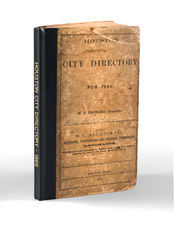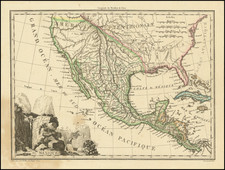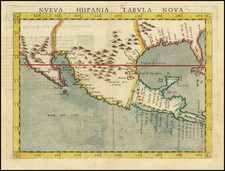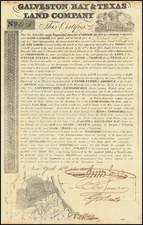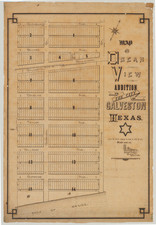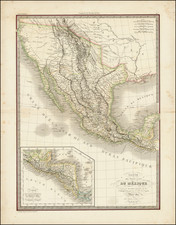One of the first printed maps of the first major Texas oilfield centered on the Spindletop "Lucas" Gusher.
The map is reflective of the frenzy of commercial and oil-drilling activity that took place around the Lucas Gusher in 1901, especially in the vicinity of the so-called "Spindletop Heights". The map notes that it was "Taken by permission from the large map issued by the Beaumont Engineering Co."
There are very few other contemporary cadastral maps of the area around Spindletop immediately after oil was discovered there. Those maps that do exist are extremely rare, being known in one or handful of examples each.
The Discovery of Oil at Spindletop
If one had asked a Beaumonter on January 1, 1901, what big news of recent months had most interested him, he would have said the great Galveston hurricane of September 8, or the dawning of a new century. If one had asked him on January 10, he would have said the great gusher at Spindletop - a salt dome about three miles south of Beaumont. Dubbed "The Lucas Gusher," the oil discovery on Spindletop Hill changed the economy of Texas and helped to usher in the petroleum age. -- Spindletop Gladys City Boomtown Museum, Lamar University.
The discovery of oil at Spindletop in 1901 is a fascinating story, which had a monumental impact on Texas, American, and world history. The Spindletop strike was discovered by a true Texas character, Pattillo Higgins. Higgins first came across the Spindletop salt dome on an excursion with his Sunday school class. The area had a "sour" sulfur smell and mineral water seeped from the ground. Higgins was an amateur geologist and recognized these as signs of a potential oilfield. To pursue his hunch, Higgins partnered with George O'Brien, George Carroll, Emma John, and J.F. Lanier to form the Gladys City Oil, Gas, and Manufacturing Company in 1892. In the 1890s, most professional geologists held that oil would not be found along the Gulf Coast. Indeed, Higgins was thought a dilettante by many and his personal character was challenged in the local newspaper. Higgins forged on in spite of that and began drilling in 1893. Unfortunately, all of the initial three shallow drilling attempts failed to locate oil due to the shifting sands and unstable clay under the hill. Higgins held onto his ownership and leases of land over the salt dome but resigned from the company.
Higgins held onto hope of finding oil at Spindletop but had no luck finding new partners until, in 1899, he received a response from another semi-professional geologist who shared his belief about Gulf Coast salt domes containing oil. That man, Anthony Lucas, signed an agreement with Higgins and began drilling in late 1900.
Drilling at the site was incredibly difficult. A new rotating hydraulic drill collapsed upon reaching a depth of approximately 900 feet. Not able to deal with the technical difficulties, and short on money, Lucas asked for help from John D. Rockefeller of Standard Oil. Rockefeller passed but not before persuading John H. Galey and James M. Guffey, associates of the Mellon family from Pittsburgh, Pennsylvania, to join the project. After reaching the depth of 1,210 feet, at 10:30 AM on January 10, 1901, natural gas erupted followed by a stream of crude oil reaching 200 feet. The eruption lasted nine days, spewing out approximately 100,000 barrels of oil a day, and was finally stopped by one of Lucas's devices.
At the time of this discovery, the average oil well with a good yield produced about 50 barrels a day, or approximately 18,000 barrels a year. The Spindletop field produced 3 million barrels in its first year and 17 million the next; more than all other oil wells in the world combined. The discovery broke John D. Rockefeller’s oil monopoly and made America the world's number one oil producer.









